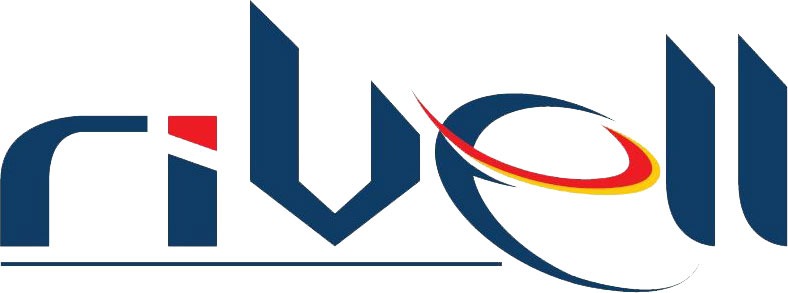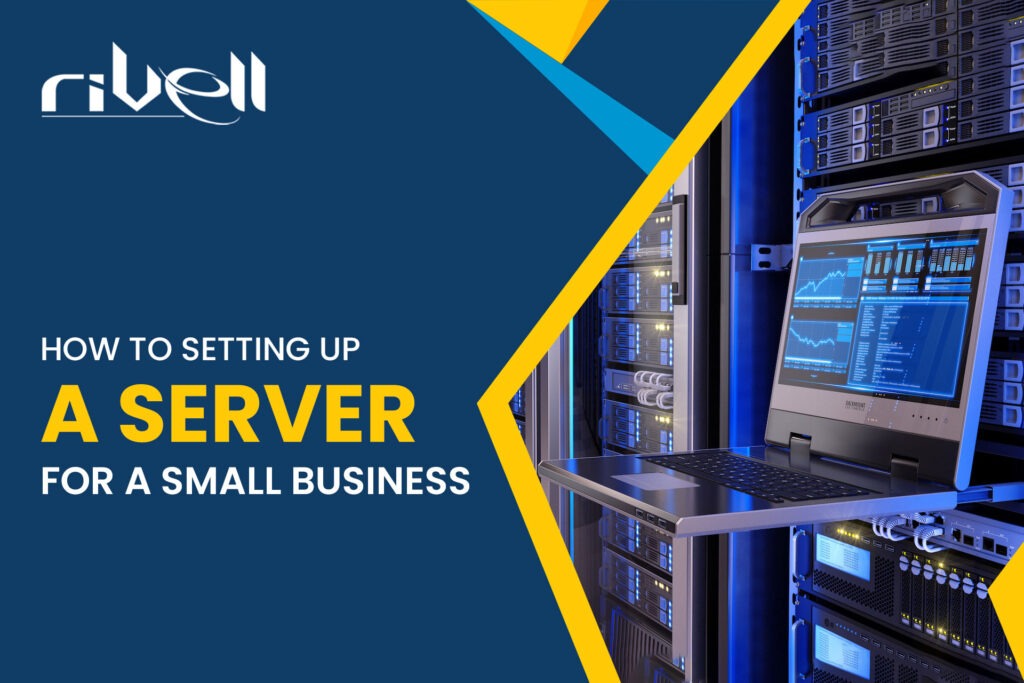Why a Server is Essential for Small Businesses
In the dynamic landscape of modern business, small enterprises often find themselves juggling multiple tasks simultaneously. A server serves as the backbone of a small business, providing a centralized hub that facilitates seamless communication, efficient data management, and heightened security.
One of the primary reasons a server is indispensable for small businesses is the need for centralized data storage. Unlike individual computers, a server consolidates data in a secure and organized manner. This not only simplifies data retrieval but also ensures consistent and reliable backups, safeguarding critical information from unforeseen events.
In a collaborative work environment, communication is key. A server enables small teams to share files effortlessly, collaborate on projects in real-time, and maintain a unified communication platform. This not only enhances productivity but also fosters a collaborative culture within the organization.
Security is a paramount concern for businesses of all sizes. Small enterprises may underestimate the vulnerabilities they face. A dedicated server allows for robust security measures, including access controls, encryption, and regular system audits. This fortification is crucial in safeguarding sensitive business data and protecting against potential cyber threats.
Furthermore, a server acts as a reliable host for business applications and software. Centralized management of these applications ensures uniformity in their usage across the organization, simplifying updates and troubleshooting. This centralized control minimizes downtime, allowing the business to operate smoothly and efficiently.
As small businesses grow, scalability becomes a vital consideration. A server provides the flexibility to scale operations seamlessly, accommodating increased data storage needs, additional users, and expanding functionalities. This scalability ensures that the technological infrastructure aligns with the evolving demands of the business.
Benefits of Setting Up a Server for small businesses
The benefits of investing in a dedicated server are multi-faceted, addressing crucial aspects of efficiency, collaboration, and security.
1. Centralized Data Management
A server serves as a centralized repository for your business data. This consolidation simplifies data management, ensuring that information is organized, easily accessible, and consistently backed up. This not only streamlines daily operations but also provides a secure foundation for critical business information.
2. Enhanced Collaboration
Collaboration lies at the heart of a successful business. A server facilitates seamless collaboration by enabling team members to share files, collaborate on projects in real-time, and access shared resources. This collaborative environment fosters innovation, accelerates project timelines, and strengthens team cohesion.
3. Improved Security Measures
Security breaches pose a significant threat to businesses of all sizes. A dedicated server allows you to implement robust security measures, including access controls, data encryption, and regular system monitoring. By centralizing security protocols, you fortify your business against potential cyber threats, safeguarding sensitive information.
4. Reliable Backup Solutions
Data loss can be catastrophic for any business. Servers offer reliable backup solutions that ensure your critical data is consistently and securely backed up. This not only protects against accidental deletions or hardware failures but also provides a recovery mechanism in the face of unforeseen events.
5. Efficient Resource Management
A server optimizes resource management by centralizing the hosting of applications and software. This centralization streamlines updates, maintenance, and troubleshooting processes. It ensures that all users within the organization have access to the same version of applications, reducing compatibility issues and minimizing downtime.
6. Scalability for Future Growth
As your business expands, so do your technological needs. A server provides scalability, allowing you to seamlessly accommodate increased data storage requirements, additional users, and the integration of new technologies. This scalability ensures that your technological infrastructure aligns with the evolving demands of your growing business.
7. Increased System Reliability
Servers are designed for reliability and uptime. Unlike individual workstations, servers are equipped with redundant components and backup systems, minimizing the risk of system failures. This heightened reliability ensures that your business operations continue smoothly without disruptions.
Setting Up a Server for a Small Business
Whether you are a budding entrepreneur or an established small business owner, the process of setting up a server can seem daunting. Fear not; this comprehensive guide will walk you through each step, ensuring a smooth and effective setup tailored to the unique needs of your business.
1. Assessing Business Needs
Before delving into the technicalities, take a step back and assess your business needs. Consider the size of your team, the nature of your operations, and the data storage requirements. This foundational understanding will guide decisions regarding server capacity, hardware specifications, and software choices.
2. Choosing the Right Server Hardware
Selecting the appropriate server hardware is a critical decision. Evaluate factors such as processing power, storage capacity, and scalability. Depending on your needs, you may opt for a physical server onsite or explore cloud-based solutions for greater flexibility.
3. Selecting the Operating System
The choice of an operating system (OS) is a pivotal decision that influences the server’s functionality. Popular options include Windows Server, Linux distributions, and FreeBSD. Consider compatibility with your business applications and the level of technical expertise within your team.
4. Setting Up the Server Hardware
Once you have your server hardware in place, proceed with the physical setup. Install the server in a secure and well-ventilated space. Connect the necessary cables, including power, network, and peripherals. Power up the server and conduct preliminary tests to ensure everything is functioning as expected.
5. Installing and Configuring the Operating System
With the hardware set up, it is time to install and configure the chosen operating system. Follow the step-by-step installation process, configuring settings such as user accounts, network configurations, and security parameters. Pay close attention to best practices for a secure and optimized setup.
6. Network Configuration
Effectively configuring your server’s network settings is crucial for seamless communication. Set up IP addressing, subnetting, and DNS configurations. Implement security system rules and security measures to safeguard your server from potential external threats.
7. User and Permission Management
Create user accounts for individuals within your organization and establish granular permissions to control access to sensitive data. Implementing strong user and permission management practices ensures data security and integrity.
8. Data Backup and Recovery
Implement a robust backup strategy to safeguard against data loss. Define backup schedules, choose reliable backup storage solutions, and regularly test the recovery process. This step is crucial for business continuity in the face of unforeseen events.
9. Remote Access and Monitoring
Enable remote access to your server for administrative purposes. Implement monitoring tools to track server performance, identify potential issues, and set up alerts for proactive problem resolution. Remote access and monitoring enhance overall server management and efficiency.
Read More : Why is Network Monitoring Important
10. Software and Application Installation
Identify the necessary business applications and software required for your operations. Install and configure these applications on the server, ensuring uniformity across the organization. Regularly update and patch software to maintain security and performance.
11. Security Best Practices
Server security is paramount. Implement server hardening techniques, install antivirus and malware protection, and conduct regular security audits. Stay proactive in addressing potential vulnerabilities to fortify your server against cyber threats.
12. Troubleshooting Common Issues
No setup is without its challenges. Equip yourself with the knowledge to diagnose and resolve common server issues. From connectivity problems to error handling, having troubleshooting skills ensures minimal downtime and a resilient server environment.
13. Long-term Maintenance Tips
As you complete the initial setup, consider long-term maintenance. Regularly update software, monitor server performance, and stay informed about emerging technologies. A well-maintained server is the key to sustained efficiency and growth for your small business.
Frequently Asked Questions
Q1: What can a server do for a small business?
A server can provide centralized data storage, enhance collaboration through shared resources, improve security measures, streamline application management, offer reliable backup solutions, and support scalability for future growth. It acts as a backbone for efficient business operations.
Q2: How much does it cost to start up a server?
The cost of setting up a server can vary based on factors like hardware specifications, software licenses, and additional services. On average, small businesses may spend anywhere from a few hundred to several thousand dollars. Cloud-based solutions offer flexibility with monthly subscriptions.
Q3: How do I set up a server for a small or mid-sized business?
Setting up a server involves assessing business needs, choosing the right hardware and operating system, configuring network settings, managing users and permissions, implementing security measures, and installing necessary software. A step-by-step guide tailored to your business can ensure a smooth setup.
Q4: How to set up a small business network with a server?
To set up a small business network with a server, start by designing the network architecture. Connect the server to the network, configure IP addressing and DNS settings, establish user accounts, and implement security measures. Integrate business applications and ensure regular maintenance for optimal performance.
Q:5 Can Rivell assist in setting up my business server?
Absolutely! Rivell specializes in guiding businesses through server setup, ensuring a tailored solution that aligns with your unique needs. Our highly-skilled team of IT professionals and server management experts can help you from choosing the best server types to enhancing cybersecurity measures. Call us at (856) 603 – 0000 to book a consultation.
In conclusion, setting up a server for your small business is a multifaceted endeavor that requires careful planning and execution. By following this comprehensive guide and seeking the support of seasoned professionals like Rivell, you will not only establish a robust server infrastructure but also position your business for success in today’s competitive landscape. Embrace the power of a dedicated server and witness the transformative impact it can have on your small business operations.
Need Help Setting Up Your Server and Network? Contact Rivell Today!
Embarking on the journey of setting up a server for your small business is a significant undertaking, and the expertise of professionals can make the process smoother. Rivell specializes in guiding businesses through the intricacies of server setup, ensuring a tailored solution that aligns perfectly with your unique needs. Whether you are starting from scratch or looking to optimize your existing setup, our team is ready to assist.
At Rivell, our ensemble of highly-skilled IT professionals and server management experts is ready to arrange the perfect composition for your business server—from selecting the ideal server types to fortifying cybersecurity measures. Call us at (856) 603 – 0000 or contact us.











